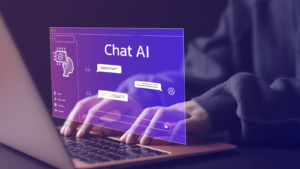Key Takeaways
- Importance of AI Translation: AI translation software in 2024 is essential for effective global communication, catering to businesses and travelers alike to overcome language barriers.
- Key Features to Consider: Look for tools with real-time translation, extensive multi-language support, contextual understanding, and user-friendly interfaces for enhanced user experience.
- Top Software Options: Notable AI translation tools for 2024 include Software A, excel in real-time translations and customization; Software B, focuses on business applications with collaboration features.
- Pricing Models: AI translation tools have diverse pricing options, from subscription plans to pay-per-use models, allowing users to choose based on their specific needs.
- User Feedback Matters: Ratings and reviews offer critical insights into each software’s performance, highlighting the significance of user experience in selecting the right tool.
- Future Trends: The future of AI translation emphasizes enhanced contextual understanding, voice translation capabilities, specialized terminology, and stronger data security measures.
As the world becomes increasingly interconnected, the demand for effective communication across languages has never been greater.In 2024, AI translation software and tools are at the forefront of breaking down language barriers, offering innovative solutions that enhance understanding and collaboration. These advanced technologies leverage machine learning and natural language processing to deliver translations that are not only accurate but also contextually relevant.

From businesses expanding into new markets to travelers navigating foreign countries, the right translation tools can make all the difference. With a plethora of options available, it’s crucial to identify the best AI translation software that meets specific needs. This article explores the leading tools of 2024, highlighting their features, benefits, and how they can transform communication in a globalized world.
AI Translation Software
AI translation software employs advanced algorithms and neural networks to deliver accurate translations across various languages. These tools analyze context, nuances, and cultural references, ensuring translations maintain their intended meaning. In 2024, the landscape of AI translation software includes diverse options tailored for different user needs, emphasizing seamless communication.
Key features of AI translation software include:
- Real-time Translation: Provides instant translation for conversations, crucial for live interactions.
- Multi-language Support: Supports numerous languages, catering to global audiences.
- Contextual Understanding: Utilizes machine learning to grasp context, improving translation quality.
- User-friendly Interfaces: Simplifies the translation process, making it accessible for all users.
Applications span various fields, including:
- Business Communications: Facilitates cross-border operations and negotiations.
- Travel Assistance: Enhances travel experiences by breaking language barriers.
- Content Localization: Allows companies to tailor their content for specific markets.
Emerging trends in AI translation software concentrate on increased accuracy, the incorporation of user feedback, and the integration of voice translation capabilities. These advancements ensure that users receive not only accurate translations but also a more natural flow of language.
Key Features To Look For
Identifying essential features enhances the selection of AI translation software in 2024. Consider the following aspects for optimal performance.
Language Support
Language support encompasses the variety of languages offered for translation. Prioritize tools that cover major global languages, including Spanish, Mandarin, French, and Arabic. Verify capabilities in translating dialects or specialized terminologies specific to fields such as medical or technical sectors. The broader the language support, the more versatile the tool for diverse communication needs.
Ease Of Use
Ease of use refers to the accessibility and intuitiveness of the software interface. Select tools that offer straightforward navigation, allowing users to engage without extensive training. Support for various devices, including mobile and desktop platforms, adds convenience. Real-time translation features enhance user experience in scenarios requiring immediate communication.
Accuracy And Reliability
Accuracy and reliability signify the precision of translations provided by the software. Evaluate tools based on their ability to maintain context and semantics, especially in complex sentences or idiomatic expressions. Seek software with a proven track record, supported by user reviews and testimonials. Regular updates and user feedback mechanisms can improve translation quality over time.
Top AI Translation Software & Tools 2024
AI translation software continues to evolve, offering robust features for seamless communication. Here are some of the top tools for 2024 that stand out in the market.
Software A: Overview And Features
Software A excels in real-time translation capabilities, supporting over 100 languages. Users benefit from its intuitive interface and robust mobile support, making communication easy on the go. Key features include:
- Contextual Understanding: Machine learning algorithms enhance translation accuracy by analyzing context.
- Voice Recognition: Instant voice translations facilitate smoother conversations in various settings.
- Customization Options: Users can tailor translation preferences to fit specific industry terminology.
Software B: Overview And Features
Software B stands out for its focus on business applications, providing specialized terminology for various sectors. It supports notable features such as:
- Collaboration Tools: Integration with popular project management platforms allows teams to work together efficiently.
- Document Translation: Advanced formatting capabilities ensure the integrity of original documents.
- User Feedback Integration: Continuous learning from user input improves translation quality over time.
- Neural Machine Translation: This technology enhances translation flow and maintains nuance across multiple languages.
- Offline Mode: Users can access translations without internet connectivity, ideal for travelers.
- Cross-Platform Compatibility: The software is available on various devices, ensuring accessibility anytime, anywhere.
Comparison Of AI Translation Tools
The comparison of AI translation tools involves analyzing key aspects such as pricing, user feedback, and performance. This analysis helps determine the most suitable software for various needs and preferences.
Pricing Options
Pricing varies significantly among AI translation tools. Many providers offer subscription plans, one-time fees, or pay-per-use models.
- Software A: This tool has tiered pricing, starting at $19.99 per month for individuals, with a professional plan at $49.99 per month for teams. It includes all features and regular updates.
- Software B: It offers a free version with limited functionality and a premium subscription at $29.99 per month. The premium version provides advanced features, including document translation and collaboration tools.
- Software C: This option operates on a pay-per-use basis, charging $0.10 per translated word, making it ideal for occasional users.
- Software D: It features student and educational discounts, offering a 30% reduction on the standard $39.99 monthly fee.
User Reviews And Ratings
User reviews and ratings provide insight into the effectiveness and reliability of AI translation tools.
- Software A: Receives a score of 4.5 out of 5 on major review platforms, praised for its real-time translation and user-friendly interface.
- Software B: Holds a rating of 4.0 out of 5, commended for its collaborative features but noted for occasional inaccuracies in translations.
- Software C: Scores 4.2 out of 5, favored for its flexibility and accuracy, particularly in technical jargon.
- Software D: Achieves 4.3 out of 5, highlighted for its innovative features and responsiveness to user feedback.
These metrics assist potential users in making informed decisions based on the specific needs of their communication tasks.
Future Trends In AI Translation
Advancements in AI translation technology are shaping the future of global communication. Key trends include enhanced contextual understanding through deep learning and tailored neural network models. These developments enable AI translation tools to grasp intricate nuances and cultural idioms, improving translation accuracy significantly.
Increased integration of user feedback plays a pivotal role in refining software performance. AI translation systems collect real-time feedback, enabling continuous learning and optimization. This user-centric approach ensures translations align closely with user expectations and linguistic preferences.
Voice translation capabilities continue to evolve, making interactions more seamless. Tools incorporating speech recognition provide instantaneous translations, offering convenience for travelers and business professionals alike. These advancements enhance real-time conversations, eliminating language barriers effectively.
Focus on specialized terminology adds value in professional sectors. Software is adapting to cater to industries such as legal, medical, and technical fields, ensuring precise translations of complex terms. This tailored approach supports businesses in maintaining accuracy and coherence across various documents and communications.
Security and data privacy also emerge as significant concerns. As more businesses adopt AI translation tools, protecting sensitive information becomes paramount. Future developments will likely include stronger encryption protocols and data management policies to safeguard user data and foster trust.
Overall, trends indicate a move towards more versatile, accurate, and user-friendly AI translation solutions.
Machine Learning
The landscape of AI translation software in 2024 promises to enhance global communication like never before.With advancements in machine learning and natural language processing, users can expect translations that are not only accurate but also contextually relevant.
As businesses and travelers increasingly rely on these tools, the emphasis on user-friendly interfaces and real-time capabilities becomes crucial. Evaluating options based on features like language support and accuracy will empower users to make informed choices.
Looking ahead, the integration of user feedback and emerging trends in voice translation will further refine these tools, making them indispensable in an interconnected world. Embracing the right AI translation software can bridge language barriers and foster seamless communication across cultures.



